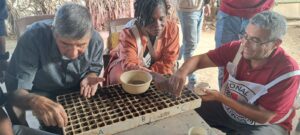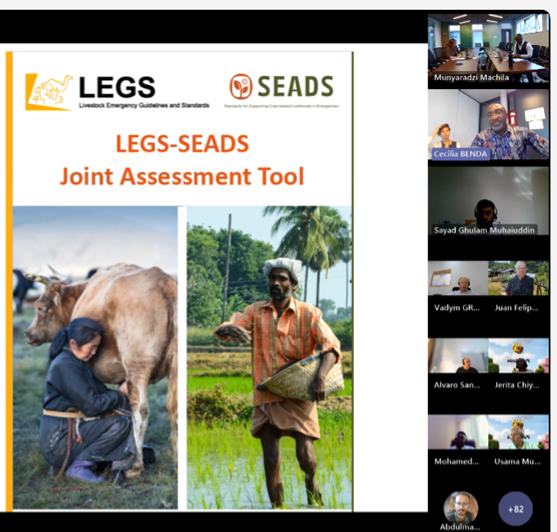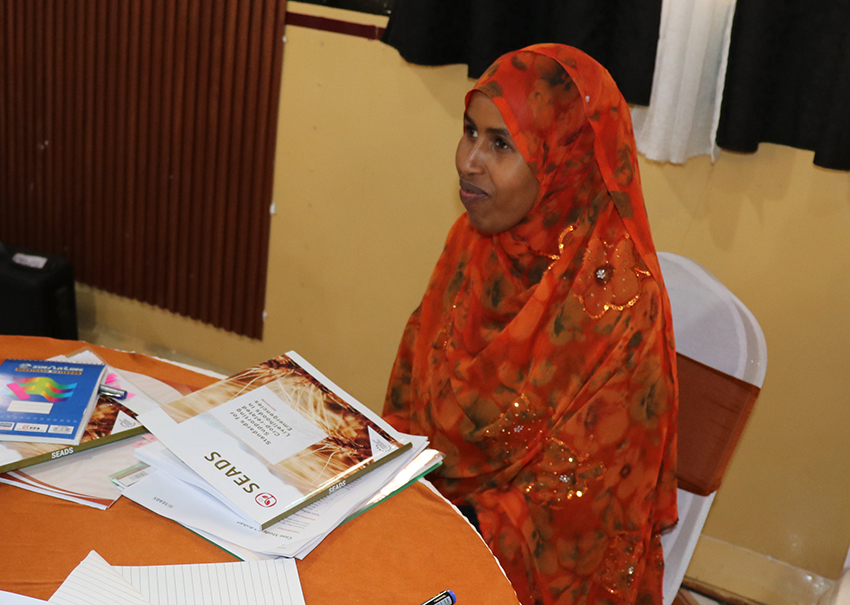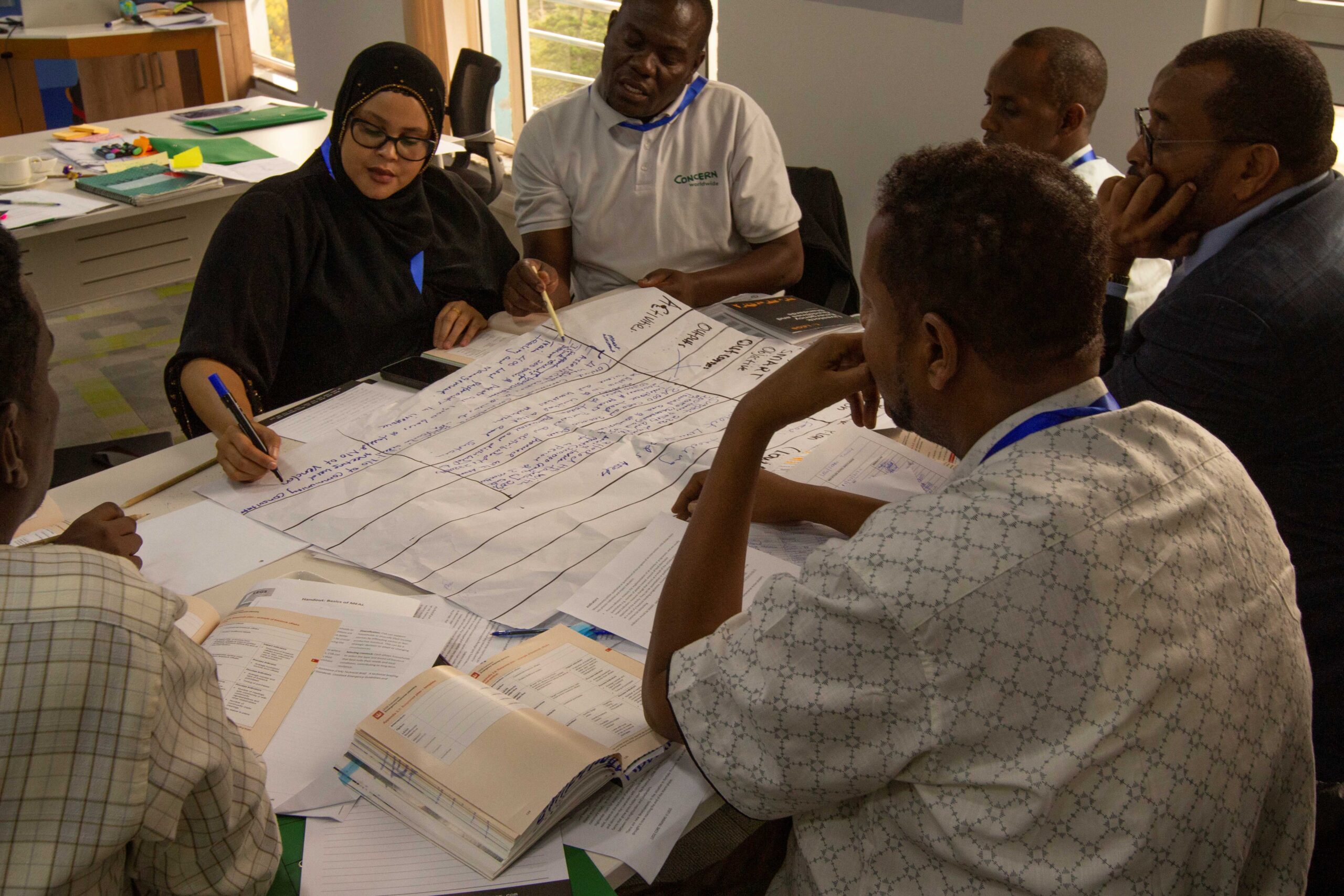
Gaza is home to two million people and spans just 370 km2. Agriculture is a lifeline for many, and the region was previously self-sufficient in fresh vegetable production. Yet, conflict and climate change have left the sector struggling to survive. Since October 2023, Gazan agriculture has been severely impacted by war: only 20-30% of agricultural land remains usable, and just 10-20% of the fresh vegetables once grown are now produced. However, even before the current conflict, farmers faced significant barriers – including limited access to land, water, fertilizers, and other essential resources – which were compounded by the impacts of climate change.
Against this backdrop, the SEADS Handbook provides critical guidance for rehabilitating the region’s crop-related systems. Usama Mukhallalati, an International Committee of the Red Cross (ICRC) agronomist and a SEADS field team member since 2020, has played a key role in applying SEADS in Gaza, with a particular focus on climate resilience and local adaptation. “The devastation is overwhelming – not just for farmers but for the entire community that relies on agriculture for food and income,” Usama shares. “The SEADS Handbook has been my guide through challenges, providing hope and a clear path forward.”
ICRC’s longstanding commitment
For 18 years, ICRC has worked with 5,000 farmers in Gaza’s border areas, helping to rehabilitate land and restore access to agricultural resources. However, the protracted conflict has displaced many of these farmers. “The farmers we used to support near the border are now in internally displaced person (IDP) camps,” Usama notes. “While we continue to meet with them when possible, we are now focusing on new farmers further inland to protect what remains of the production systems.”
Since the beginning of the war, ICRC has provided tens of thousands of non-food items and food parcels to IDPs. Additionally, it has been actively supporting critical sectors such as drinking water supply, solid waste management, and healthcare to address urgent humanitarian needs. SEADS principles and standards have played a critical role in shaping ICRC’s response in Gaza. Chapter 5 of the SEADS Handbook, which focuses on seed and seed systems in emergencies and includes a decision tree, has been particularly influential. The decision tree provides a structured framework for promoting and evaluating interventions, and ensuring they are feasible and impactful. “We followed SEADS’ decision tree, asking key questions and evaluating local conditions to determine the best solutions,” Usama explains. “This process guided us in balancing immediate recovery needs with long-term sustainability.”
Sustaining greenhouses and seed systems
Following the May 2023 escalation, one of the most impactful emergency response interventions has been the rehabilitation of greenhouses, an essential component of Gaza’s agricultural system. Guided by SEADS, the ICRC team worked with farmers to restore high-value vegetable production under challenging conditions.
For instance, to address rising temperatures, the team installed shade nets to reduce heat inside the greenhouses. “The shade nets were a simple yet powerful solution,” Usama reveals. “They allowed farmers to regain their livelihoods despite the extreme heat.”
The SEADS decision tree also guided decisions on whether to implement direct interventions or facilitate community-led efforts, ensuring the most effective use of resources. “The decision tree ensured every step we took was meaningful and impactful,” Usama explains. The results have been transformative, enabling the cultivation of crops such as tomatoes, leafy greens, and herbs. “Rehabilitating the greenhouses was about more than just food – it was about restoring hope,” Usama continues. “Farmers are seeing that their efforts still make a difference, even in the face of so much destruction.”
While greenhouse rehabilitation addressed immediate needs, the sustainability of Gaza’s cropping systems depends on safeguarding local seed systems. These systems, vital for food security, have been disrupted by conflict and a reliance on hybrid seeds that cannot be locally multiplied. “Without a strong local seed system, farmers are always vulnerable,” Usama emphasizes. “SEADS Guidelines helped us incorporate seed multiplication into our plans, ensuring farmers have the tools they need to rebuild sustainably.”
Building resilience through collaboration
The SEADS Framework emphasizes collaboration, and this approach has been central to ICRC’s success in Gaza. Coordination with local farmers, authorities, and humanitarian organizations ensures interventions are tailored to the local context and promote long-term sustainability. This collaborative, evidence-based approach has strengthened resilience and fostered hope within Gaza’s farming community.
For Usama, the SEADS Handbook is more than just a technical guide. “I’ve been displaced with my family eight times in the last year, but I’ve always kept the SEADS Handbook with me,” he shares. “It represents my hope to restore Gaza’s agriculture one day. The farmers are our friends – they dream of their farms and hold on to the hope of returning.” He continues: “SEADS Guidelines are part of that hope – not just for ICRC but for all rehabilitation actors. The SEADS Handbook should be on the desk of every actor involved in rebuilding crop-related agriculture.”



